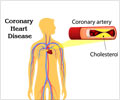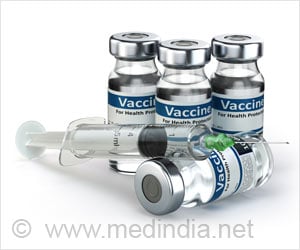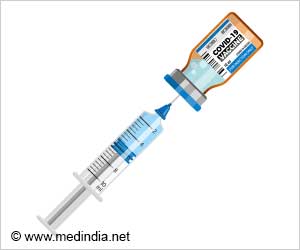Abciximab - decreases damage to the heart muscle in high-risk patients and reduces the size of large heart attacks, shows study.

Two approaches to prevent this process have been studied extensively with highly conflicting results: (1) delivering high concentrations of abciximab to the blood clot (thrombus) at the site of the lesion, where it keeps platelets from sticking together and causes the clot to collapse, and (2) sucking out the clot through a process called manual aspiration thrombectomy.
"All of the earlier studies have limitations," said Gregg W. Stone, MD, director of cardiovascular research and education, Columbia University Medical Center/New York-Presbyterian Hospital, New York City, and principal investigator of the INFUSE-AMI trial. "To clarify which approach, if any, can reduce the size of the heart attack, we studied only patients presenting within four hours of symptom onset with a large anterior heart attack, with blockage of the largest heart artery confirmed by cath lab. These are destined to be very large heart attacks, but the patients presented early enough for us to be able to reduce the amount of damage."
INFUSE-AMI used a 2 x 2 factorial design, which isolates the impact of each intervention to maximize the chance of identifying any reduction in heart attack size. The trial, conducted at 37 sites in six countries, screened 6,318 patients and enrolled 452 (7.2 percent). It is a single-blind study in which the operator knew the randomization assignments.
Participants were randomly assigned to one of four arms: (1) aspiration plus abciximab; (2) aspiration without abciximab; (3) no aspiration plus abciximab; and (4) no aspiration or abciximab (control). In the two abciximab arms, a "weeping" balloon catheter delivered the drug right to the site of the lesion, which "invariably has a thrombus," Dr. Stone noted. A catheter was used to aspirate clots. All patients who had angioplasty were given bivalirudin, an anticoagulant that keeps bleeding and mortality low.
The primary efficacy endpoint was heart attack size at 30 days, as measured by cardiac MRI for 382 of 439 surviving patients (87.1 percent). Heart attack size was gauged by calculating infarct size as a percentage of total heart muscle tissue. Patients in the two abciximab arms had significantly smaller heart attacks than patients in the two no-abciximab arms (median 15.1 percent vs. 17.9 percent). By contrast, aspiration thrombectomy did not decrease heart attack size (17.0 percent) compared with no aspiration (17.3 percent). The aspiration plus abciximab group showed the lowest median heart attack size of 14.7 percent, compared with 17.6 percent for the other three groups combined. Clinically, there were no significant differences among the four groups for any major measures of safety or efficacy at 30 days. Patients will be assessed again at six months and one year.
Atrium Medical, manufacturer of the ClearWay RX catheter, funded and participated in design of the study. Dr. Stone serves as a consultant to Atrium Medical and to Medtronic, which manufactures the Export aspiration catheter used in the study, to Eli Lilly, distributor of abciximab, and to The Medicines Company, maker of bivalirudin.
 MEDINDIA
MEDINDIA



 Email
Email










